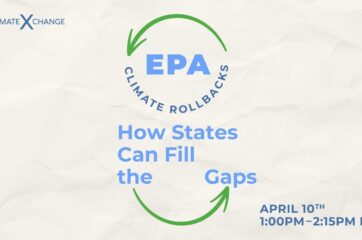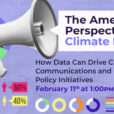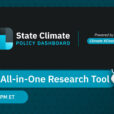We are still amid a global pandemic. As COVID-19 continues to wreak havoc, the United States has not done the best at ensuring its citizens’ health and safety. Vaccine distribution, while finally at 50% nationwide, is still not as widespread and accessible as it was promised. The morbidity rates for both unvaccinated and vaccinated have been on the rise due in large part to the very rampant Delta variant. Ever-changing mask and vaccination policies, due to the politicization of public health, further confuses and fogs the general public’s understanding of public health guidelines.
A year and a half into the pandemic and only three stimulus checks later, people have barely received any sort of substantial support to merely survive. Opening up business and public areas has helped with financial stability, especially for those whose jobs require in-person work. Consequently, though, it creates a higher risk for contracting and spreading the virus. On the other hand, lockdowns without any sort of financial contribution from the government put many at risk for financial instability. As the federal eviction moratorium expires, over two million Americans are at risk for being housing insecure, a huge determinant in contracting COVID-19.
This pandemic has opened many eyes to the field of public health. There is a critical need for an in-depth conversation on how exactly our environments, both physical and sociopolitical, shape not only our potential exposure to COVID-19 but also our overall population health. Time and time again, the same communities marginalized through environmental injustices are the same communities at a higher risk for contracting COVID-19. Efforts to improve overall public health must center and prioritize all social determinants of health, and especially those relating to our environment.
What are Social Determinants of Health?
As defined by Healthy People 2030, the federal government’s health goals for the next decade, social determinants of health are “the conditions in the environments where people are born, live, learn, work, play, worship, and age that affect a wide range of health, functioning, and quality-of-life outcomes and risks.” This includes, but is not limited to, health behaviors – the actions an individual takes that affects their health – interactions with the healthcare system, cultural and community context, access to housing and food, the physical and built environment, law and policy, and exposure to some sort of marginalization.
These determinants have an overlapping effect that forms one’s health environment. Historically, social determinants have only been combined in the discussion. Oftentimes public health initiatives look solely at one determinant (mainly health behaviors) as a measure for improving health outcomes.
The organizing efforts of the Black community during the summer of 2020, alongside other social justice issues, finally receiving their well-deserved attention, have led to a rise in efforts to improve the lived experiences of marginalized communities. This has driven public health officials and other concerned parties to begin incorporating the context of someone’s health environment more seriously in addition to their behaviors. As health behaviors and choices are limited to the resources people have access to, this change in mindset is extremely crucial for better understanding the complexities of public health.
The Field of Environmental Health
The subfield of public health that tackles the built environment as a social determinant is environmental health, which is defined as: “the science and practice of preventing human injury and illness and promoting well-being by identifying and evaluating environmental sources and hazardous agents and limiting exposures to hazardous physical, chemical, and biological agents in air, water, soil, food, and other environmental media or settings that may adversely affect human health.”
Some examples of issues that are categorized as environmental health concerns include air and water pollution, hazardous waste exposure, lack of public transportation, lack of safe and accessible housing, proximity to waste removal and logistics facilities, and food insecurity.
Environmental health as a field requires the knowledge of experts in public health, city planning, and environmental and climate justice. More importantly, it also requires knowledge from the lived experiences of those who are most impacted by these injustices. Efforts to improve our built environment can and must center on ensuring the health and safety of the communities living there.
Advocating for Public Health and Environmental Justice Simultaneously
In the context of COVID-19, an airborne virus, those who have any sort of comorbidities are at a higher risk for contracting the virus. The same populations with high COVID-19 rates are the same communities that are disproportionately exposed to a variety of these environmental health concerns, especially air pollution. When looking at the demographics of these communities, it’s clear that it’s more than just a coincidence. In particular, low-income and Black, Indigenous, and People of Color (BIPOC) communities are more likely to be essential workers, which further (involuntarily) increases their risk of contracting COVID-19.
When it comes to getting vaccinated, there are still a variety of barriers certain members of marginalized communities may face. Some jobs do not offer paid time off, so many people don’t have free time to get the vaccine or the financial ability to take time off to recover from the vaccine’s side effects. Additionally, a lack of sufficient childcare inhibits peoples’ ability to receive and recover from the vaccine’s side effects. Beyond this, there are a variety of reasons that exemplify that maintaining health is a privilege, especially within the context of this pandemic.
Discrimination is structurally integrated and intermixed within all structures of the United States. Simply tackling COVID-19 as just a ‘public health issue’ or climate change as just an ‘environmental issue’ is not sufficient. The concept of eco-pandemic injustice, as coined by Martha Powers et al. out of Northeastern University, is a great way to frame the issue at hand and look at interventions to solve it.
Eco-pandemic injustice “calls attention to otherwise less visible interconnections between injustices from the pandemic and environmental arenas.” Through this framework, it allows “windows of opportunity to enact change through collective embodied health movements, defined as social movement activism that is anchored in the varied, intersectional lived experience of the health, the social, and economic impact of illness.” This also includes tackling the basic needs, political agency, and social relationships of the everyday person.
For advocates in state-level climate policy, this means ensuring that policy during and after the pandemic is multidisciplinary, multifaceted, and protects the built environment and the security of those encompassing it. It must also include the input and understanding of those directly impacted by environmental injustices throughout the decision-making process.
Sample State Level Policies that are Doing the Work
Through processes like redlining, segregation, and other systemic forms of discrimination, it’s become even more clear the inextricable relationship between one’s health and the environment. Therefore, state-level policy tackling environmental and climate-related issues must also tackle the health, safety, and prosperity of the people. We must look at economic systems, white supremacy, ableism, and gender discrimination as the issues preventing us from achieving a healthy community and environment. Here are some state-level policies that are already doing some of this work:
California Assembly Bill 617, Community Air Protection Program: Reduce exposure in communities most impacted by air pollution. Communities around the state are working together to develop and implement new strategies to measure air pollution and reduce health impacts.
California Assembly Bill 2588, Air Toxics “Hot Spots:” Requires stationary sources to report the types and quantities of certain substances routinely released into the air.
New Jersey Senate Bill 320, Lead Service Lines Residential Sale Requirements: Requires contracts for sales of residential property to address lead service lines, requires lead service lines to be replaced upon sale of residential property.
Equitable and good-quality public health policies require alleviating environmental injustices. Especially during an airborne pandemic, efforts to achieve a healthy population require all social determinants of health to be alleviated. This means tackling the root issues that sustain environmental injustices and make them more prevalent.









